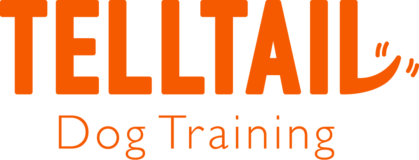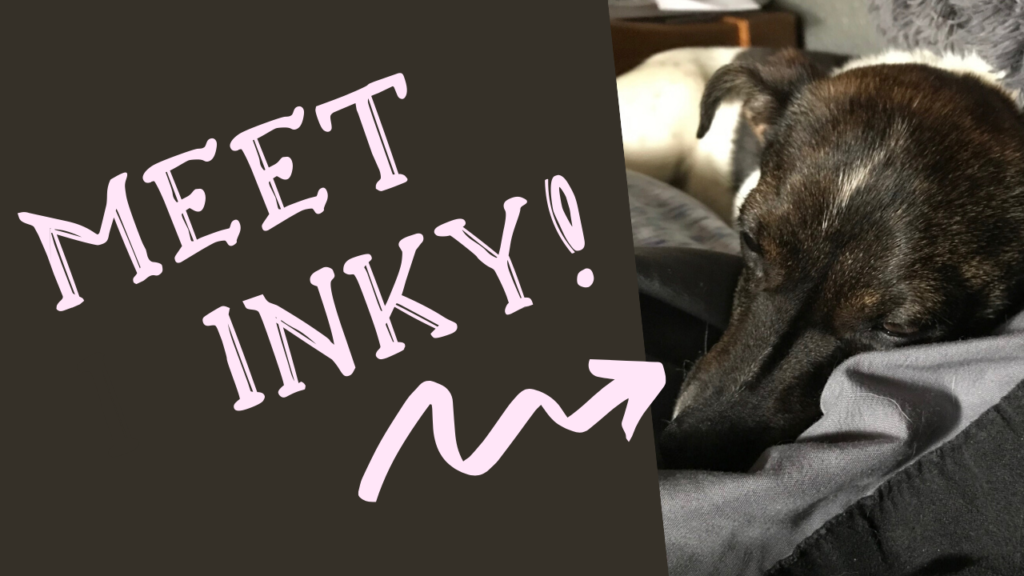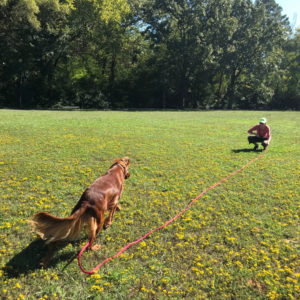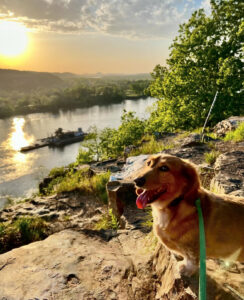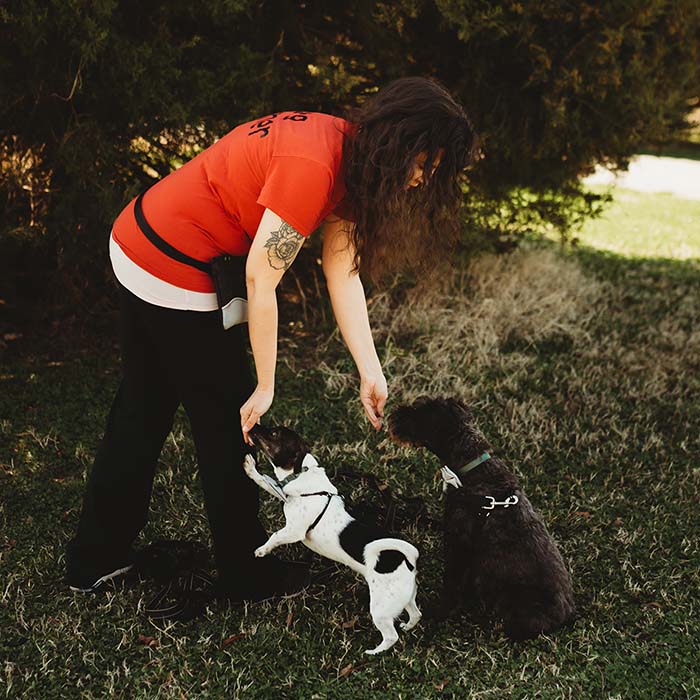Meet Inky! + Potty Training Tips
And some collaborations, classes are starting back up, with more to come
Things are slowly getting going over here at Telltail Dog Training.
I’m looking to start classes back up in June and gradually add back in private lessons. All classes will be no more than eight people at most and may require masks depending on location but will practice social distancing. More announcements are below.
And I wanted to introduce my new dog, Inky, and share some potty training tips. We think Inky is a Toy Fox Terrier. I’d originally thought that she was a Jack Russell, but she’s too small. Even her ears are not quite right for a Fox Terrier, so she might be mixed with something. Who knows! She is very cute and very small at 7.5 pounds.
I had no intention of getting another dog. At all. I’m a one-dog person, I like to say. There’s nothing wrong with having multiple dogs, but I had found for my life and needs that one small dog worked really well for me, especially since I had a lot of upheaval in my life over the past few years.

But then I was awake late one night, which I never am. I’m usually asleep by 10 or 11 pm. But this was in early April, I was still facing the shock of everything that was happening in the world, and I couldn’t sleep. A friend posted about a small dog that had been dumped and she didn’t know what to do with her. I had no intention of keeping her, but I decided I needed something to do, something to help, and I messaged her and I said I’ll take her.
Inky was pretty sick, and she was not housebroken.
I work pretty closely with a rescue here in central Arkansas and in every one of their puppy posts, they say, the dog needs training! They will have accidents and chew on things! This is true for most dogs.
The reality is that adult dogs can have accidents in their forever home, too. Whether it’s because they were never taught because they were outside dogs or their people didn’t have the time, or they regressed because they were in the shelter and weren’t taken out regularly and had no choice, or they were sick, or a variety of other reasons.
Before I get into my methods, I do want to address some additional issues:
- Fear-based or excitement-based peeing. This often happens to puppies but can happen to dogs of all ages.
- Marking in the house. This is not simple potty needs but may be a symptom of other issues that should be examined.
- Unable to potty on concrete or grass or anywhere that is not inside the house.
These are not typical issues and you may have to speak with a trainer, a vet, or possibly a behaviorist if you’re seeing some of these issues. It is important that your dog is healthy before any training, including potty training, is started.
I potty trained Atlas, who was here about a month ago, and Inky pretty much back to back, and here’s what worked for them:
- Get your dog on a schedule, and try to work on this while you have some time at home.
I like to have a mixture of walks, exercise, and playtime. I had Atlas at my house for a week, and I followed the same sort of schedule, but it was a lot more for him because he was a very high energy puppy who resorted to mischievous behaviors, like play biting, when he was bored. For Atlas, we’d do a 30-minute walk first thing in the morning, then playtime, then training. At noon or in the evening, we’d do an hour-long walk, then playtime, then training. If he got a long walk at noon, he got a 30-minute walk in the evening. I took him out every four hours if he was crated, or every two hours if he was out of his crate. He never had the opportunity to go to the bathroom in the house, and he didn’t have one accident the entire week he was with me. I’ll give an example schedule below, but play around with it and make it work for you and your dog. Inky, for example, only needs two longer walks, but more potty breaks outside, plus playtime and training. I’ll also share her schedule in comparison.
Schedules for Atlas, Inky, and Jeeves



What I forgot to mention in the podcast is how to adapt the schedule over time. It does vary by dog, but Jeeves at eight years old does not need multiple potty breaks throughout the day. Jeeves is a good example of how you can morph a schedule over time, but he’s also not typical either. He may take a midday potty break, but he doesn’t always need it. Most dogs will need at least a midday potty break and possibly more.
- Have eyes on your dog, have your dog on a leash in the house, or have your dog in a confined area while you are potty training. They should not have free reign of the house until they are reliably communicating with you and pottying outside.
I didn’t realize that crates are controversial until I moved to Arkansas. I have found at least a confined space helpful for dogs, and Inky is usually in the bathroom if she isn’t with me. I used a crate for Atlas. If they are considered a fun space and the dog gets a special treat or toy when they’re in the crate, a lot of dogs can find comfort and peace in a crate. If they are shoved into the crate all the time or they’re left in for a long or they’re only put in the crate when they’ve done something bad, then the crate can have different connotations. Also, if you do not want to use a crate, it’s not something I will personally insist upon as the only option. Crates are a tool that aren’t for everyone or every dog.
- Try not to punish your dog for accidents. You want your dog to let you know when they need to go potty, and any punishment can really hurt that trust and communication.
If a dog does have an accident, and you see it, you can try to disrupt it with a loud clap. Take the dog outside immediately. Clean the area thoroughly and keep track of time. Was it that you were pushing the time too much? Were they sick? Did you get off the schedule? Accidents happen and it’s okay.
A book that I recommend, especially for puppies, is the Perfect Puppy in 7 Days by Dr. Sophia Yin. It really breaks down the potty training process and you can use it for older dogs first. The goal of potty training is to show the dog that going outside of the house is the preferred action, and by setting up your dog for success, you can potty train very quickly and get reliable behavior.
In addition to potty training, dogs often need time to get used to other dogs in the home. I like to do gradual introductions between the new dog and existing dogs in the home. With Inky, she demanded to meet Jeeves pretty much immediately, but we took our time with other dogs she’d be around a lot, Sonar and Maslow. Now, she absolutely adores Maslow, my sister’s mastiff.
And she’s doing much better now in general. She had two types of worms and has not been spayed or even been to a vet, so I’m slowly catching her up on everything as I can. After I had her for about a week, I decided I wanted to see what this smart little feisty dog could do, and I decided to keep her. She is very funny and busy. She’s probably the busiest little dog I’ve ever met. I’ll be doing something in the kitchen and I’ll look up and she’s just busy, trotting from one of the end of the living room to the other, looking for things to do. She’s also going to be a regular on the dog training series that I started with my nephew, Drago and Roos. I think she’s going to be a cool trick dog.
How did you potty train your dog? What worked for you and what didn’t? What do you wish you knew before you brought your dog home? Sound off in the comments below or send me an email at info@telltaildogtraining.com. Telltail Dog Training offers group classes and private in-home lessons in the Little Rock area, along with training walks for current clients. Find Telltail’s podcast here, or find additional information on Instagram, Facebook and YouTube. Special thanks to Jim Ciago of Seven Second Chance for providing the music for the series.
Announcements
Puppy Live and Socialization
I’m working with Dr. Ball on doing a FB puppy Live and socialization classes on Saturday morning at the clinic next week. Numbers will be low, no more than four, as per usual with my classes. As a solo dog trainer, I don’t have more than four people per class so I can help everyone and provide individual attention. As we move into June, I’ll be offering six-week classes for Puppy K, Level 1, and Level 2 if there’s enough interest.
Rescue Series
I’ll be sharing my rescue series this week. I was working with a pet magazine that was supposed to launch this spring, but that’s been delayed indefinitely. I spoke with Lori Miller, a animal rescuer with Arkansas Animal Alliance, Hannah Wherry, a wildlife interpreter with Turpentine Creek Wildlife Refuge, and Sierra Laurent, a wildlife rehabilitator. I’d like to share those interviews in some way, so I’ll be posting those over the next few days. I’ll also be sharing 12 Steps to Successful Rescue, an article I co-wrote with Nicole Skeehan, the owner of Philly Unleashed, the company where I learned how to dog train. Nicole and I continue to work closely together on various projects, and she’s a resource I use often because she’s awesome.
Collaboration with VIP Dog Walking and Pet Sitting
More on this to come very soon, but in the meantime you can check out April’s website. We decided to join forces to become a one-stop shop for pet services in Central Arkansas.
